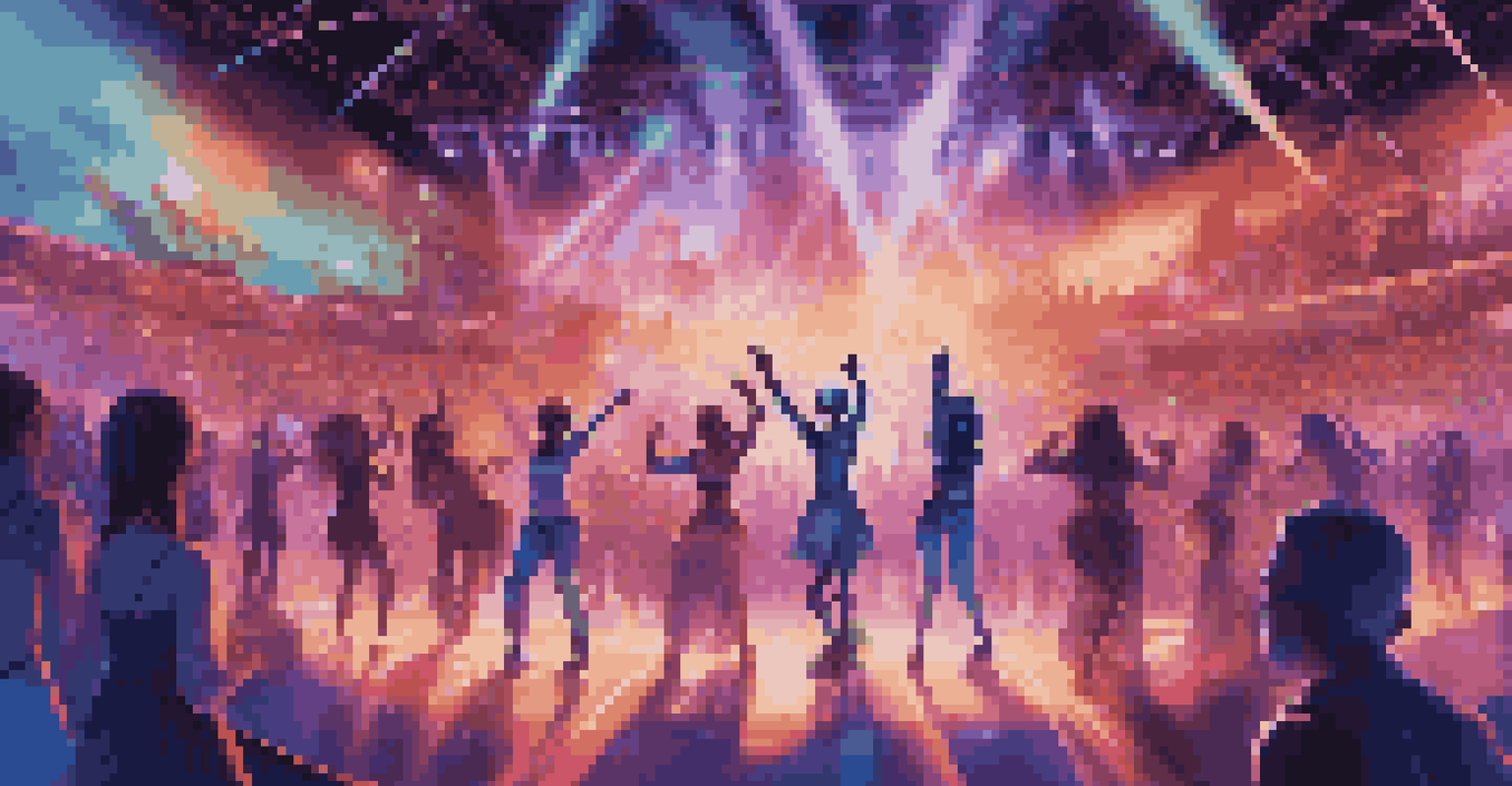The Rise of Social VR Platforms: Connecting People Globally

Understanding Social VR: A New Frontier in Digital Interaction
Social Virtual Reality (VR) is revolutionizing the way we connect online, providing immersive environments where users can interact as if they were in the same physical space. Imagine attending a concert or having a coffee chat with a friend, all from the comfort of your home—this is the essence of social VR. The technology creates a sense of presence that traditional social media platforms simply can't match, making interactions feel more genuine and engaging.
The future is already here — it's just not very evenly distributed.
As social VR platforms gain traction, they offer a unique blend of gaming, socializing, and creativity. Users can create avatars, decorate virtual rooms, and participate in events, all while meeting new people from around the world. This not only enhances personal connections but also fosters a sense of community among users who share similar interests.
Moreover, as the technology improves, we can expect increasingly sophisticated experiences. Think about the potential for virtual travel, where you could explore the Eiffel Tower or relax on a beach in Bali with friends, all without leaving your living room. This immersive escapism is just one of the many reasons social VR is becoming a staple in our digital lives.
The Impact of Social VR on Global Connections
One of the most significant impacts of social VR is its ability to bridge geographical divides. With the world becoming more interconnected, people from different cultures and backgrounds can interact in ways that were previously unimaginable. This fosters understanding and empathy, as users can share their experiences and perspectives in a virtual setting.

Consider a user in New York joining a virtual book club with members from Tokyo and Paris. They can discuss their favorite novels in real-time, exchanging ideas and insights that enrich their understanding of diverse viewpoints. This global exchange is not just beneficial for individuals; it also contributes to a richer, more inclusive online culture.
Social VR Enhances Global Connections
Social VR platforms allow users from diverse backgrounds to interact in immersive environments, fostering understanding and empathy.
As social VR continues to evolve, it's likely to play a pivotal role in international collaboration, whether for business or leisure. Imagine attending a global conference with participants from all over the world, interacting in a shared virtual space that feels just as real as being there in person. The possibilities for connection are virtually limitless.
The Evolution of VR Technology and Its Accessibility
The rapid evolution of VR technology has made it more accessible than ever, allowing a wider audience to participate in social VR experiences. Advances in hardware, such as more affordable headsets and improved graphics, have lowered the barrier to entry, inviting people from various backgrounds to explore these virtual worlds. This democratization of technology is essential for building diverse communities within social VR.
Technology is best when it brings people together.
Additionally, many social VR platforms are designed to be user-friendly, enabling individuals with varying levels of tech-savviness to navigate these spaces easily. Tutorials, guided experiences, and intuitive interfaces help newcomers feel comfortable as they embark on their virtual journeys. This aspect is crucial for attracting and retaining users who might otherwise feel intimidated by complex technology.
As more people join the social VR landscape, we can expect to see an explosion of creativity and innovation. Users will bring their unique perspectives and ideas, enriching the virtual ecosystems and making them vibrant and dynamic spaces for connection.
Challenges and Limitations of Social VR Platforms
Despite the many advantages of social VR, there are inherent challenges and limitations to consider. One significant concern is the potential for social isolation, as users may become so engrossed in their virtual lives that they neglect real-world relationships. Balancing virtual interactions with offline connections is essential for maintaining a healthy social life.
Privacy and security also pose challenges in the realm of social VR. The immersive nature of these platforms often requires sharing personal information, which can lead to concerns about data protection and user safety. Ensuring that platforms implement robust security measures is crucial for fostering a safe environment where users can connect without fear.
Avatars Foster Identity Exploration
Avatars in social VR empower users to express their identities creatively, enhancing engagement and personal connection.
Moreover, as with any emerging technology, there are disparities in access. While VR devices are becoming more affordable, not everyone has the means to participate. Addressing these inequalities will be vital in ensuring that social VR can truly connect people from all walks of life.
The Role of Avatars in Social VR Experiences
Avatars are a fundamental aspect of social VR, serving as digital representations of users in the virtual world. They allow individuals to express their identities creatively, whether through customized appearances, outfits, or accessories. This personalization fosters a sense of ownership and belonging within the virtual space, encouraging users to engage more fully.
Interestingly, avatars can also provide a unique opportunity for self-exploration and experimentation. Users can embody different personas, which may help them feel more confident or express aspects of their identity they might not feel comfortable showcasing in real life. This element of anonymity can lead to richer interactions and a deeper exploration of personal connections.
As social VR continues to develop, the potential for avatars is expanding. Future advancements may allow for even more realistic representations and interactions, blurring the lines between the virtual and physical selves, and creating a truly immersive experience for users.
The Future of Social VR: Trends to Watch
Looking ahead, several trends are shaping the future of social VR. One significant development is the increasing integration of artificial intelligence (AI) to enhance user experiences. AI can help create more realistic interactions, such as generating dynamic conversations or adjusting avatars based on user preferences. This level of personalization can deepen connections and engagement on these platforms.
Another trend is the rise of hybrid events that combine both in-person and virtual experiences. Imagine attending a live concert where you can invite friends from around the world to join you in a virtual space. This blending of realities not only expands the reach of events but also allows for a more inclusive environment where everyone can participate.
Future Trends in Social VR
Emerging trends like AI integration and hybrid events are set to revolutionize social VR, enhancing user experience and inclusivity.
Finally, as social VR continues to grow, we can expect to see an increased focus on wellness and mental health. Platforms may introduce features to promote healthy engagement, mindfulness practices, and support systems for users seeking connection. This emphasis on well-being will be crucial for ensuring that social VR remains a positive space for all.
Conclusion: Embracing the Social VR Revolution
The rise of social VR platforms marks a significant shift in how we connect with others. These immersive environments are transforming our digital interactions, creating opportunities for meaningful relationships that transcend geographical boundaries. As we embrace this new frontier, it's essential to navigate the challenges and limitations while celebrating the potential for global connections.
By fostering a sense of community, promoting inclusivity, and prioritizing user safety, social VR can become a powerful tool for enhancing our social lives. The ability to meet new people, explore diverse cultures, and engage in shared experiences is something we should all strive for, especially in today's increasingly digital world.

As we look to the future, let's embrace the possibilities of social VR and the connections it can foster. Whether you're a seasoned user or just dipping your toes into the virtual waters, remember that the heart of social VR lies in the relationships we build and the communities we create together.